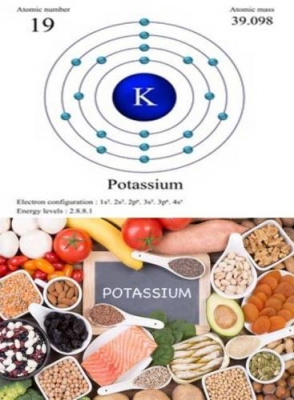
Potassium was the first element to be discovered using the process of electrolysis. It was discovered by Humphry Davy, a young British man, who was working as an apprentice to a surgeon-apothecary in the year 1807. Davy was fascinated by the science of passing electrical current through various substances to break them apart. This process is what we now call electrolysis. He obtained potassium from potassium hydroxide through this process and a few months after discovering the element, Davy isolated sodium using the process of electrolysis.
Potassium gets its name from the English word potash. Its chemical symbol is K, which comes from kalium, the Medieval Latin word for potash. It is believed that kalium was derived from the Arabic word qali, which means alkali. Potassium has low density for a metal and it appears as a shiny, lustrous metal at room temperature. It reacts vigorously with water to form hydrogen gas. It burns with a bright red colour in a flame test.
Potassium is a vital mineral needed for the body. It helps to regulate fluid balance, muscle contractions, and nerve signals. Including more potassium in your diet can also help to reduce blood pressure and water retention. Such a diet also protects our body against stroke and prevents diseases like osteoporosis and kidney stones.
Picture Credit : Google




